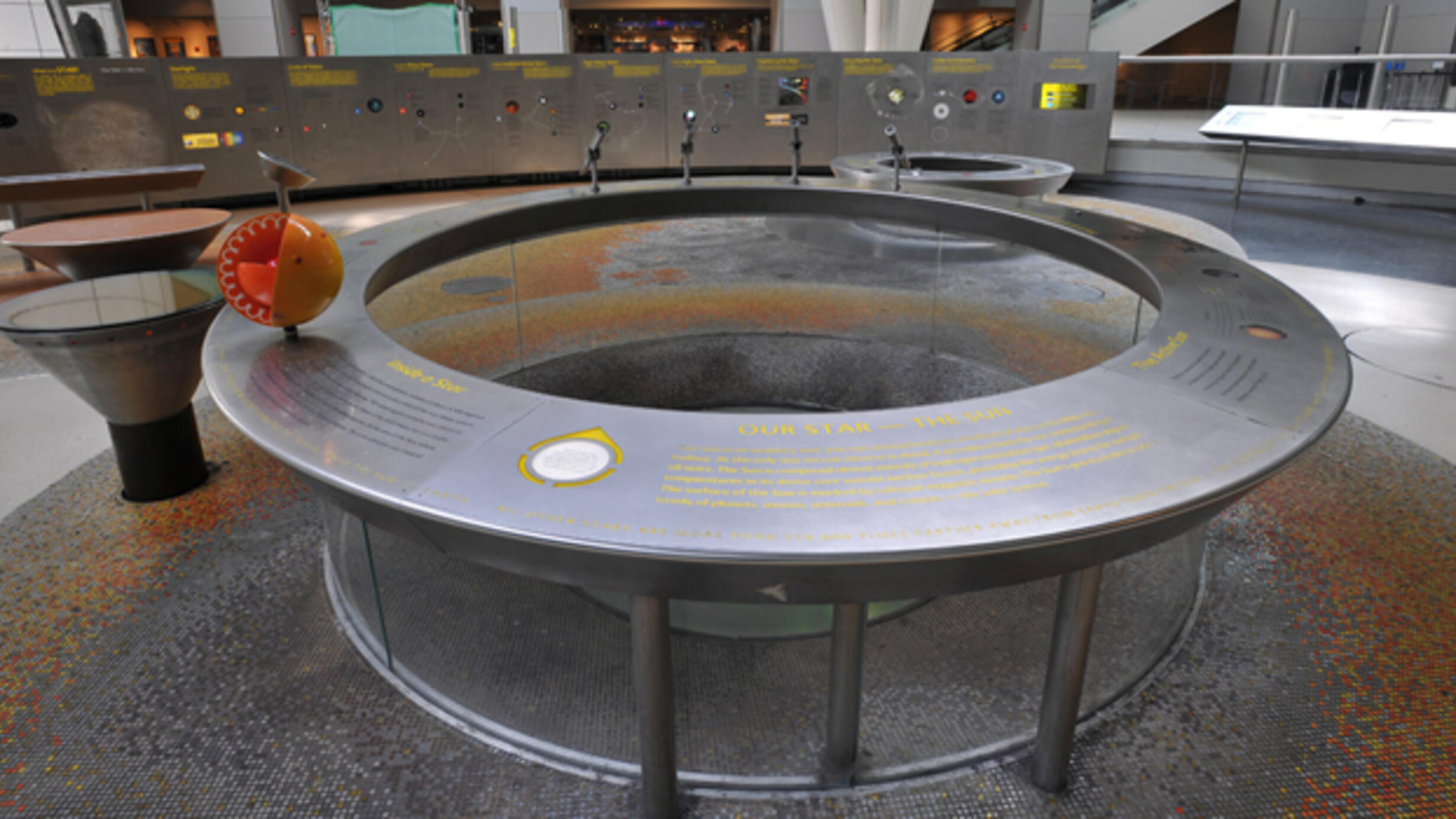Our Star: The Sun
Part of Hall of the Universe.
 AMNH/D. Finnin
AMNH/D. Finnin As the only star we can observe in detail, it provides a basis for our understanding of all stars. The Sun is composed almost entirely of hydrogen and helium gas. Multimillion-degree temperatures in its dense core sustain nuclear fusion, providing the energy source for sunlight. The surface of the Sun is marked by colossal magnetic storms. The Sun’s gravity holds in orbit a family of planets, moons, asteroids, and comets - the solar system.
3D Cutaway Model
The Sun’s visible surface, called the photosphere, radiates at about 5,500 degrees Celsius. Below it lies a turbulent region that extends a third of the way down, where the temperature reaches two million degrees. This outer region contains two-thirds of the Sun’s volume, but only 5 percent of its mass. Most of the Sun’s mass lies in a stable underlying zone, where temperatures rise to 10 million degrees. In the core of the Sun, where nuclear fusion occurs, temperatures reach 17 million degrees. The core contains one-third of the Sun’s mass, packed into 1 percent of its volume.
Sun Wavelengths
These images are observations of the Sun in many wavelengths of light. Seething activity and tremendous outbursts are everyday occurrences.
Sunspots
The Sun usually displays a few dark splotches. These sunspots are regions of concentrated magnetic fields. They are slightly cooler than their surroundings, and so appear dark only by contrast.
Solar Flares and Eruptions
Small areas on the Sun’s surface can suddenly heat to millions of degrees and erupt. Such explosions release x-rays and spew vast clouds of energetic subatomic particles out into space.